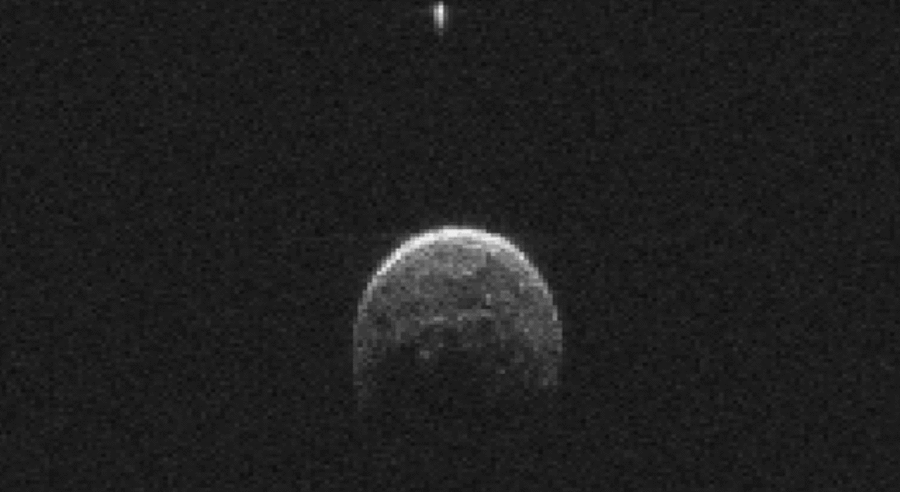Huge asteroid hurtling past Earth has its own moon
Wonderful news! Asteroid 2004 BL86, which passed closest to Earth today at a distance of 750,000 miles (1.2 million km), has a companion moon. Scientists working with NASA’s 230-foot-wide (70-meter) Deep Space Network antenna at Goldstone, California, have released the first radar images of the asteroid which show the tiny object in orbit about the main body.
While these are the first images of it, the “signature” of the satellite was seen in light curve data reported earlier by Joseph Pollock (Appalachian State University, North Carolina) and Petr Prave (Ondrejov Observatory, Czech Republic) according to Lance Benner who works with the radar team at Goldstone.
2004 BL86 measures about 1,100 feet (325 meters) across while its moon is approximately 230 feet (70 meters) across. The asteroid made its closest approach today (Jan. 26th) at 10:19 a.m. (CST), however it will peak in brightness this evening around 10 p.m. (4:00 UT) at magnitude +9.0. Unlike some flybys, 2004 BL86 will remain within a few tenths of a magnitude of peak brightness from 6 p.m. tonight (CST) through early tomorrow morning, so don’t miss the chance to see it in your telescope.
Don’t expect to see the diminutive moon visually – the entire system will only appear as a point of light, but I’m sure you’ll agree it’s cool just knowing it’s there.
Among near-Earth asteroids, about 16% that are about 655 feet (200 meters) or larger are either binary or triple systems. While that’s not what you’d call common, it’s not unusual either. To date, we know of 240 asteroids with a single moon, 10 triple systems and the sextuple system of Pluto (I realize that’s stretching a bit, since Pluto’s a dwarf planet) – 268 companions total. 52 of those are near-Earth asteroids.
With a resolution of 13 feet (4-meters) per pixel we can at least see the roughness of the the main body’s surface and perhaps imagine craters there. No details are visible on the moon though it does appear elongated. I’m surprised how round the main body is given its small size. An object that tiny doesn’t normally have the gravity required to crush itself into a sphere. Yet another fascinating detail needing our attention.
Of course the main asteroid will get your attention tonight. Please check out our earlier story on 2004 BL86 which includes more details as well as charts to help you track it as it flies across Cancer the Crab tonight. This is the best view we’re going to get of it for the next two centuries.
About Bob King
I'm a long-time amateur astronomer and member of the American Association of Variable Star Observers (AAVSO). My observing passions include everything from auroras to Z Cam stars. Every day the universe offers up something both beautiful and thought-provoking. I also write a daily astronomy blog called Astro Bob.





